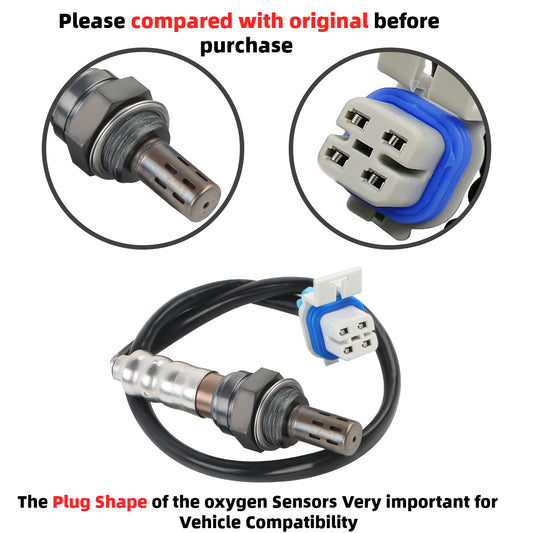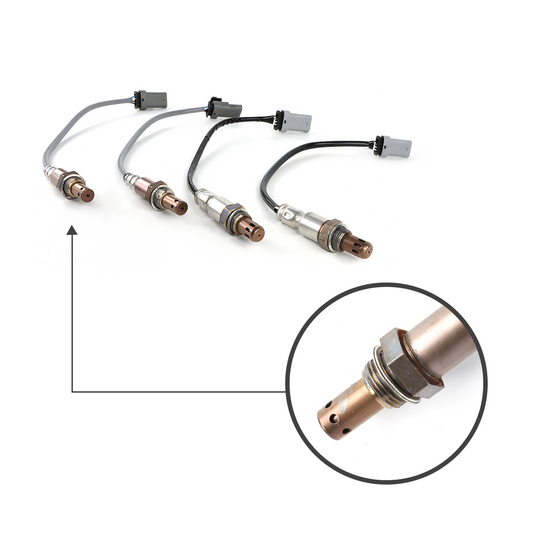Ultimate Guide to Upper Control Arm Replacement
The upper control arm is an essential component that contributes to the stability, handling, and comfort of a vehicle. It is responsible for managing the vertical motion of the suspension and absorbing road shocks. Additionally, it helps maintain proper wheel alignment with the steering system, which is crucial for safe and efficient vehicle performance.
Why Replace Upper Control Arms?
Over time, upper control arms can wear out due to normal wear and tear, resulting in looseness or play in the suspension system. In such cases, replacement of the upper control arms is often necessary to restore the proper function and performance of the vehicle's suspension system. Here are some reasons why you may need to replace the upper control arms:
- Worn or damaged ball joints: The ball joints on the upper control arm can wear out over time or become damaged due to rough driving conditions or accidents. Worn ball joints can cause the vehicle to handle poorly, make clunking noises, and can even result in a loss of steering control.
- Bent or damaged control arm: The upper control arm can become bent or damaged due to accidents, rough driving conditions, or worn-out bushings. A bent or damaged control arm can result in poor handling, and uneven tire wear, and can even cause the wheel to come loose while driving.
- Worn or damaged bushings: The bushings on the upper control arm can become worn or damaged over time, causing the vehicle to handle poorly and make noise when turning or going over bumps.
- Upgraded performance: If you're modifying your vehicle for improved handling or to accommodate larger wheels and tires, you may need to replace the stock upper control arms with performance or adjustable ones.
Failing to replace worn or damaged upper control arms can lead to handling problems, and even safety issues. However, replacing the upper control arm can provide numerous benefits for your vehicle's suspension system and overall performance, making it an important maintenance task for any vehicle owner:
- Improved Handling and Steering: Replacing a worn-out upper control arm can restore proper alignment of the wheels and suspension, which can result in improved handling and steering response. This can make your vehicle feel more stable and easier to control while driving.
- Smoother Ride Quality: A worn-out upper control arm can cause vibrations and jolts while driving, resulting in a rough or uncomfortable ride. Replacing the upper control arm can help to absorb shock from the road and provide a smoother ride quality.
- Longer Suspension Component Life: A worn-out upper control arm can cause excessive wear and tear on other suspension components, such as the ball joints and bushings. By replacing the upper control arm, you can proactively prevent additional damage to these components, effectively prolonging their durability and minimizing the risk of expensive repairs in the future.
- Improved Safety: A worn-out upper control arm can compromise the safety of your vehicle, as it can affect the handling, steering, and stability of the vehicle. Replacing the upper control arm can help ensure that your vehicle is safe and reliable to operate.
How to Replace Upper Control Arm?
Replacing an upper control arm can be a complex task that requires knowledge of automotive mechanics and specialized tools. It is recommended that you consult a professional mechanic if you are not experienced with automotive repairs. However, if you are confident about the upper control replacement, here are some general steps that can guide you through the process:

- Park your vehicle on a level surface. Then, raise the vehicle with a jack and secure its chassis with jack stands.
- Mark the location of the upper control arms. Loosen the lug nuts on the wheel that corresponds to the upper control arm you want to replace. And remove the wheel and place it aside.
- Loosen the ball joint nut via a ball joint separator or pickle fork, and use a pry bar to carefully separate the ball joint from the spindle.
- Loosen the nuts on the bushings. And remove the mounting bolts that hold the upper control arm in place with a socket wrench or other suitable tool. Be sure to keep track of any washers or other components that are removed along with the bolts.
- Remove the upper control arm from the chassis of your vehicle using a pry bar.
- Install the new control arm and reconnect any other components by reversing the steps you took to remove the old one. Ensure that the control arm is properly aligned and that all bolts are tightened to their specifications. For example, some upper control arms are designed with zerk fittings, which are made of easy-to-break copper. After lubrication, tighten the zerk fittings via a torque wrench but don’t over-tighten.
- Replace the wheel and lower the vehicle.
- Take the vehicle for a test drive before hitting the road, so as to ensure that everything feels and operates correctly. Pay attention to how the steering feels, as well as any unusual noises or vibrations. If you notice anything out of the ordinary, stop the vehicle and inspect the suspension system before continuing.

Do I Need an Alignment after Replacing Upper Control Arm?
The upper control arm is a critical component of the suspension system, and any changes to its position can affect the wheel alignment. When you replace the upper control arm, the suspension geometry can change, which can lead to misalignment of the wheels. Misalignment can cause uneven tire wear, poor handling, and decreased fuel efficiency. Therefore, it is essential to get an alignment to ensure that the wheels are properly aligned and that the vehicle performs optimally. An alignment typically involves adjusting the camber, caster, and toe angles of the wheels.
If you are diffident about alignment, you can take the vehicle to a professional alignment shop to have the alignment checked and adjusted if necessary. The alignment shop will use specialized equipment to adjust the angles of the wheels to the proper specifications.
Upper Control Arm Replacement Cost
Having said that, the main concern of some vehicle owners is the cost of replacement, which may directly affect their decision to include replacing the upper control arms in their budget list. But in the long run, if you don't replace the upper control arms, you'll likely need to replace tires or other suspension components more often, which can be a huge ongoing expense. Worn or damaged upper control arms can negatively impact the vehicle's handling, compromising stability and increasing the chances of accidents. This can result in substantial repair expenses, along with potential medical costs and other financial burdens.
Therefore, upper control arm replacement is an optimal choice. As a general guideline, the cost of replacing a single upper control arm can range from $100 to $500 or more. This price typically includes the cost of the replacement parts and the labor required to perform the replacement. If both upper control arms need to be replaced, the cost can increase accordingly.
There are several factors that can impact the cost of replacing an upper control arm, including:
- Make and Model: The make and model of the vehicle can impact the cost of the replacement part, as some vehicles may require more expensive or specialized parts.
- Quality of Replacement Parts: The quality of the replacement parts can impact the cost, as higher quality parts may be more expensive than lower quality alternatives.
- Labor Costs: The cost of labor can vary depending on the location of the repair shop, the experience and expertise of the technician, and the amount of time required to complete the replacement.
- Additional Repairs: If additional repairs are required, such as wheel alignment or replacing other worn suspension components, this can add to the overall cost of the repair.
- Warranty: Some replacement parts may come with a warranty, which can impact the cost of the repair.
The following are some specific model year replacement costs for the upper control arms listed:
|
Vehicle |
Cost (Per Arm) |
|
2007-2018 Chevrolet Silverado 1500 |
$150-$400 |
|
1999-2006 Chevrolet Silverado 1500 |
$100-$300 |
|
2000-2010 Chevrolet Silverado 2500/3500 HD |
$150-$500 |
|
2000-2010 GMC Sierra 2500/3500 HD |
$150-$500 |
|
2006-2022 Dodge Ram 1500 |
$150-$500 |
|
2004-2023 Ford F150 |
$150-$400 |
|
2003-2022 Toyota 4Runner |
$150-$500 |
|
1996-2002 Toyota 4Runner |
$100-$300 |
|
2007-2014 Toyota FJ Cruiser |
$150-$500 |
|
2010-2016 Lexus GX460 |
$300-$600 |
|
2003-2009 Lexus GX470 |
$300-$600 |
|
2005-2022 Toyota Tacoma |
$150-$500 |
|
2004-2017 Nissan Titan |
$150-$500 |
|
2005-2017 Nissan Armada |
$150-$500 |
|
2004-2006 Infiniti QX56 |
$300-$600 |
|
1995-2004 Toyota Tacoma |
$100-$300 |
|
2014-2018 GMC Sierra 1500 |
$150-$400 |
It's recommended to get a written estimate from a reputable repair shop to get a more accurate idea of the cost of replacing the upper control arms on your specific vehicle.
Conclusion
In summary, replacing the upper control arm is an important aspect of maintaining your vehicle's suspension system and ensuring proper handling and ride quality. If you suspect that your upper control arm needs replacing, it's important to take action promptly to avoid further damage to your vehicle's suspension system.
Whether you choose to perform the replacement yourself or take your vehicle to a professional mechanic, it's important to use high-quality replacement parts. At Daysyore, you will feel assured to choose a satisfactory one. Replacing the upper control arm can restore your vehicle's suspension system to its proper function and enjoy a smooth and stable ride once again.

















